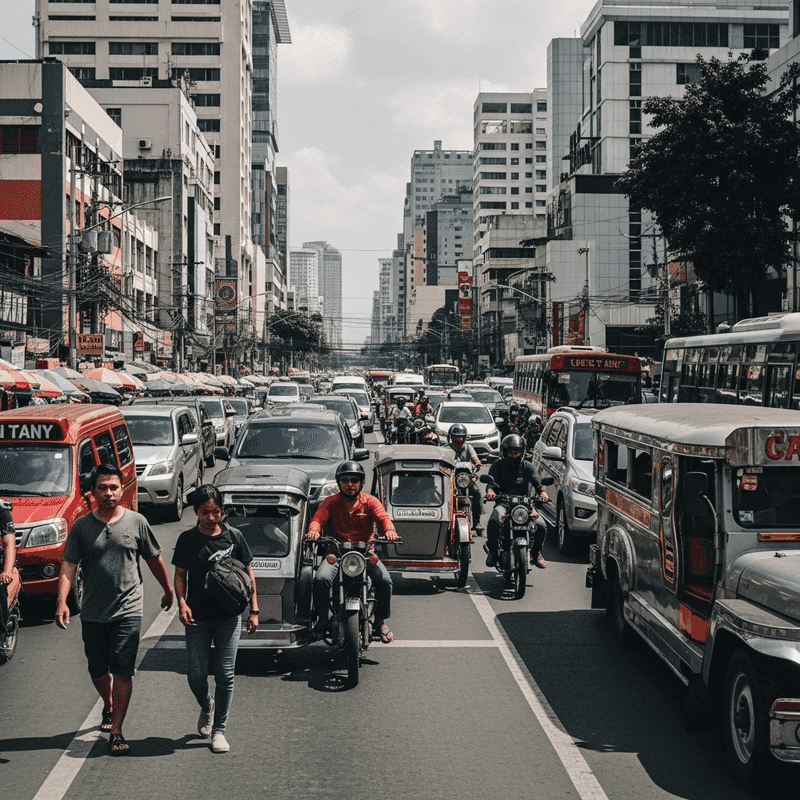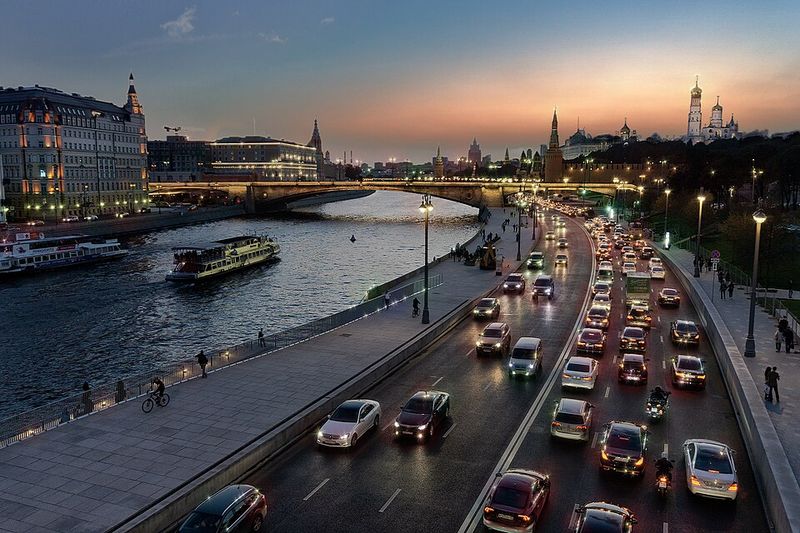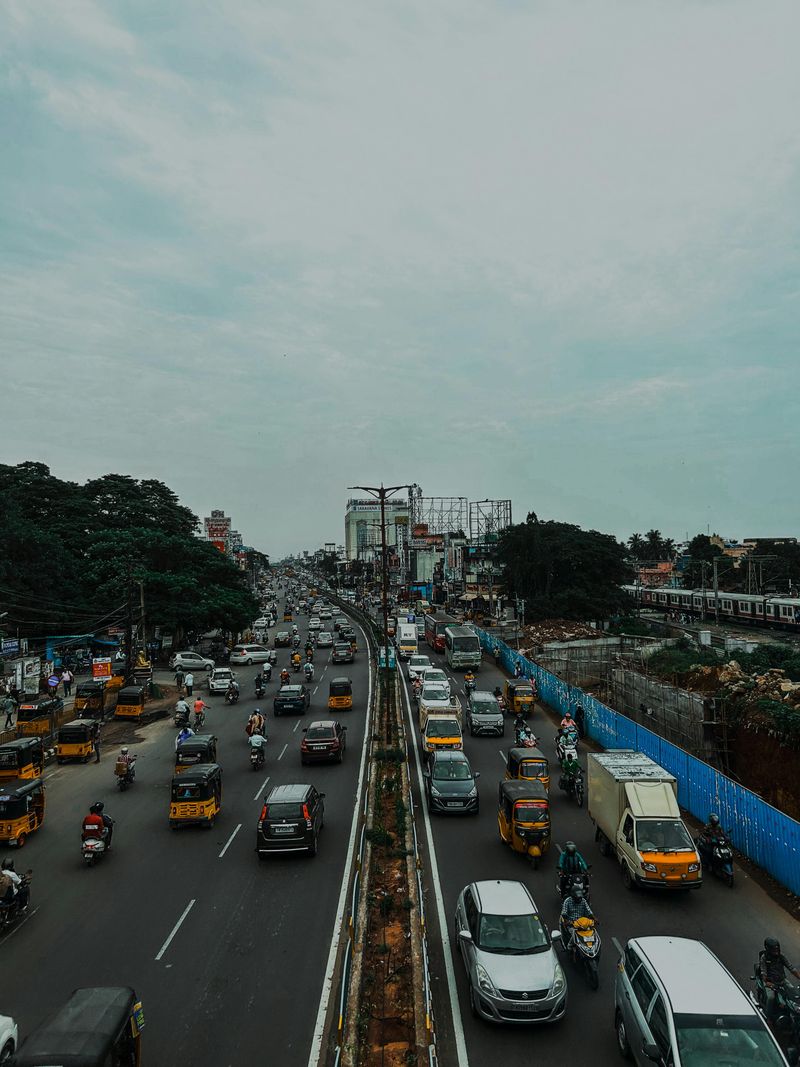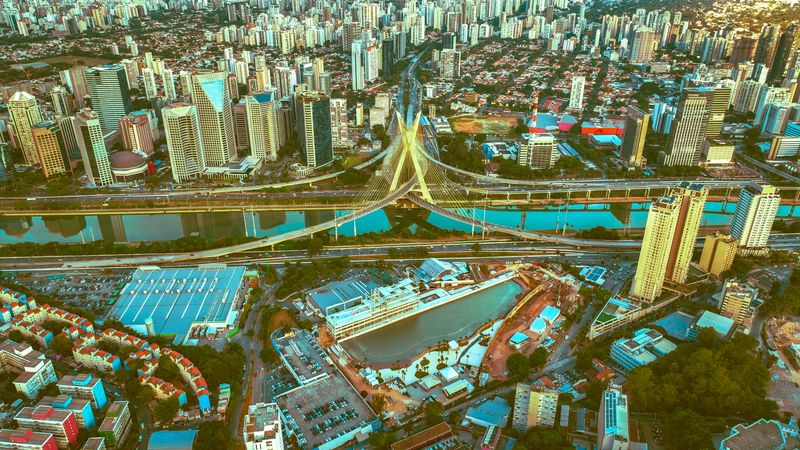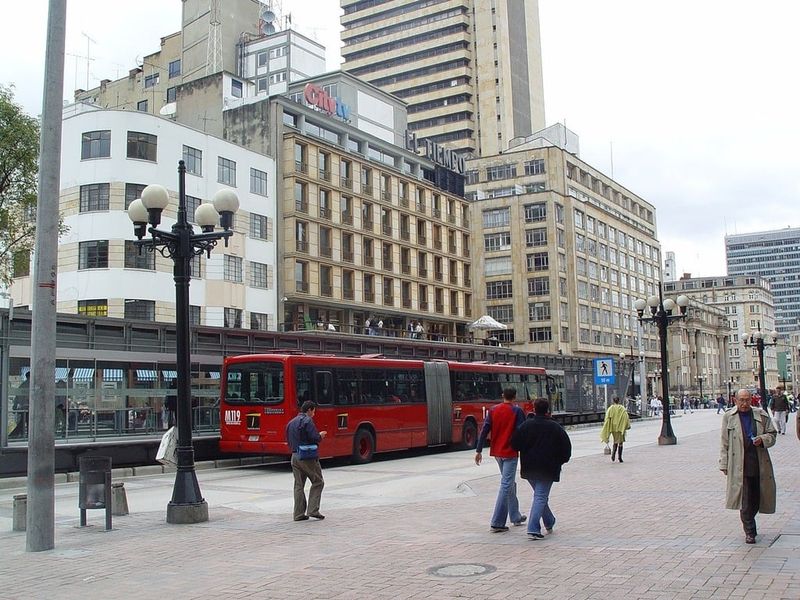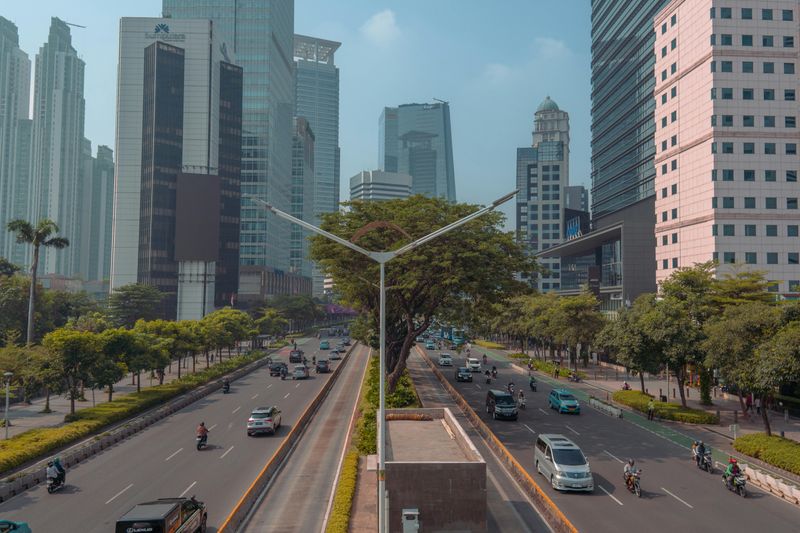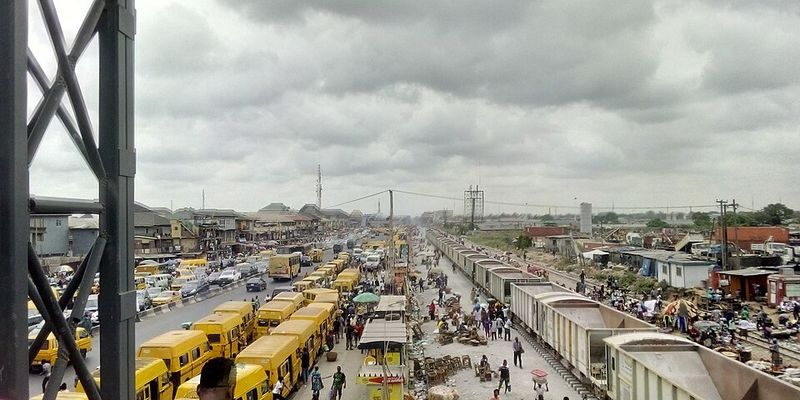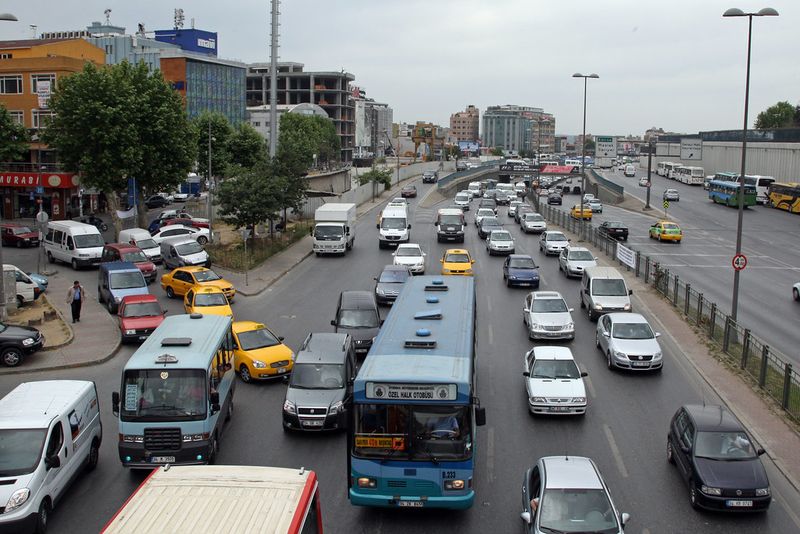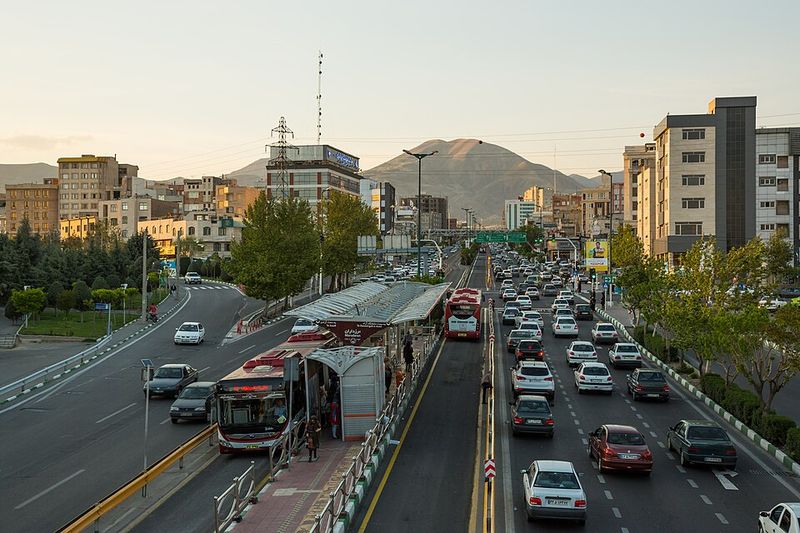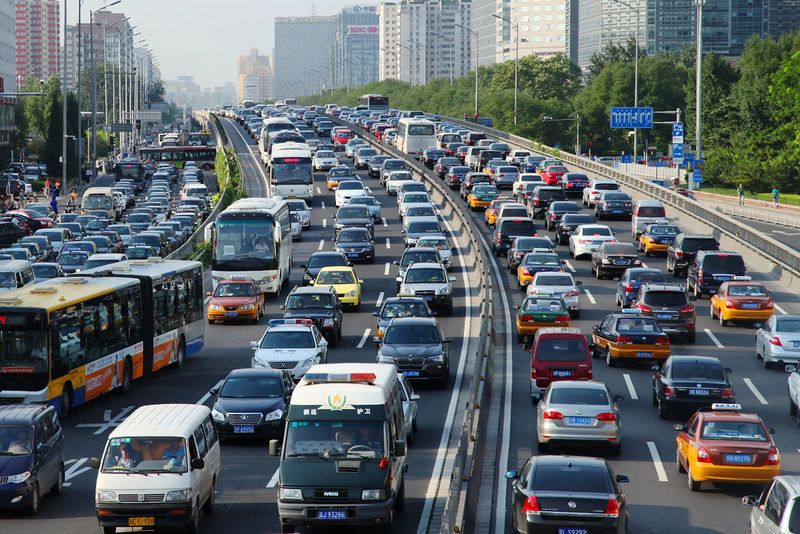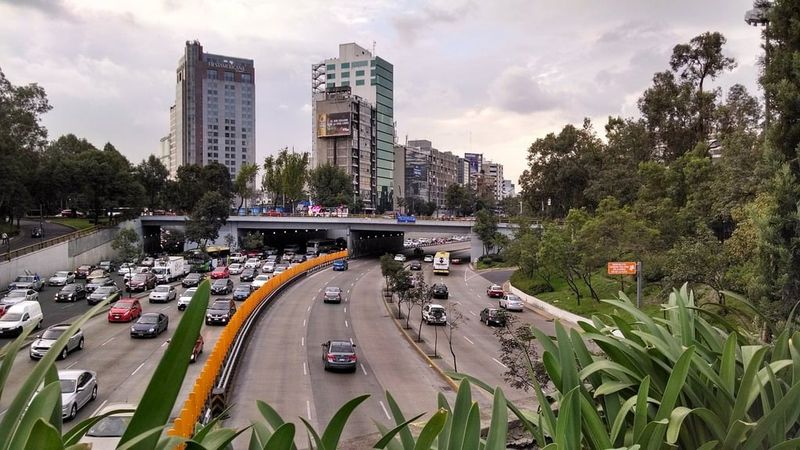Getting behind the wheel can be stressful anywhere, but some cities around the world take that stress to a whole new level. From massive traffic jams that never seem to end to chaotic roads where rules are more like suggestions, these urban areas challenge even the most experienced drivers. Whether it’s overcrowded streets, aggressive driving habits, or crumbling infrastructure, these fifteen cities have earned their reputation as the most dangerous places to navigate by car.
Mumbai, India
Over 20 million people call this bustling metropolis home, and its roads show it. Streets overflow with cars, buses, motorcycles, and every imaginable vehicle type, all competing for space on narrow lanes.
One global ranking labeled Mumbai the absolute worst city for driving worldwide. Construction zones pop up constantly, adding to the already overwhelming congestion. Lane discipline? It’s practically nonexistent here.
What might take you ten minutes in another city could easily stretch to an hour in Mumbai. Drivers need serious patience and razor-sharp alertness just to survive the daily commute. Infrastructure simply can’t keep up with the demand, turning every trip into an endurance test.
Manila (Metro Manila), Philippines
Picture the slowest traffic you’ve ever experienced, then multiply it by ten. Metro Manila claimed the unfortunate title of worst traffic among 387 metro areas globally in a 2023 report. Average speeds crawl so slowly you could practically walk faster.
The chaos comes from too many vehicles and not nearly enough road space. Commuter flows overlap in confusing patterns, and transport modes mix unpredictably. Jeepneys weave between cars while motorcycles zip through impossible gaps.
Lane discipline becomes a foreign concept when everyone’s just trying to move forward. Merging feels like a gamble, and flows shift without warning. For outsiders, the environment presents serious hazards around every corner.
Moscow, Russia
Russia’s capital regularly appears on lists of the world’s most challenging driving environments, and for good reason. Heavy congestion meets aggressive traffic behavior in a city with incredibly complex road layouts. The dense urban core features countless intersections that can confuse even GPS systems.
Drivers here often display impatient maneuvers that would shock motorists from calmer cities. Enforcement gaps mean traffic rules sometimes feel optional. Long delays become routine, not exceptions.
Navigation grows especially tricky for anyone unfamiliar with local driving habits. What locals consider normal might seem downright dangerous to visitors. The combination creates an environment where stress levels stay constantly elevated behind the wheel.
Bengaluru (Bangalore), India
India’s tech hub has a traffic problem that no amount of innovation seems to solve. Studies revealed drive times increased over 70 percent due to congestion—imagine your commute nearly doubling overnight. Even routine errands become unpredictable time sinks.
Rapid growth happened faster than road expansion could match. Mixed transport types share the same space, from auto-rickshaws to massive buses. Limited infrastructure struggles under the weight of millions of daily commuters.
The result? A high-stress, high-risk environment where planning becomes impossible. You might leave with plenty of time and still arrive late. Drivers face constant challenges that turn simple trips into mental marathons requiring complete focus.
São Paulo, Brazil
Latin America’s largest metropolis sprawls endlessly, and so does its traffic nightmare. The sheer volume of vehicles competing for space on São Paulo’s road network defies imagination. Global congestion data consistently implicates this Brazilian giant as one of the toughest places to drive.
Infrastructure struggles to handle the massive commute lengths residents face daily. Driver fatigue becomes a genuine safety concern when trips stretch for hours. The sprawling layout means there’s rarely a quick route anywhere.
Size works against everyone here—more roads just mean more places for traffic to pile up. Risk levels climb as exhausted drivers navigate complex interchanges and merge zones. What should be straightforward becomes complicated by sheer scale alone.
Bogotá, Colombia
Colombia’s capital combines congestion nightmares with genuine road safety concerns in ways that challenge every driver. Vehicle numbers have exploded rapidly, but road capacity hasn’t kept pace. Mixed mobility modes create unpredictable situations at every intersection.
Narrow streets force uncomfortable proximity between buses, cars, and motorcycles. Heavy bus traffic dominates many routes, leaving little room for error. Stop-and-go conditions stretch for miles during peak hours.
Road design constraints from earlier eras complicate modern traffic flow. Compared to cities with better planning, Bogotá presents elevated risks that demand constant vigilance. Drivers must anticipate sudden stops, unexpected merges, and tight squeezes that would feel dangerous anywhere else in the world.
Jakarta, Indonesia
Indonesia’s capital frequently tops rankings of the world’s worst driving and traffic cities. Massive traffic volumes overwhelm roads that were never designed for such pressure. Limited road expansion means congestion just keeps getting worse year after year.
Infrastructure challenges add layers of stress that drivers elsewhere never face. For those accustomed to orderly traffic systems, Jakarta presents a shocking contrast. Congestion doesn’t just slow you down—it stops you completely for extended periods.
Mixed vehicle types create unpredictable flow patterns that shift moment by moment. Motorcycles swarm between cars in ways that seem impossible. Managing this environment requires skills and patience that go far beyond normal driving abilities, making Jakarta genuinely one of the harder cities to navigate safely.
Lagos, Nigeria
Recent lists crown Lagos as having one of the globe’s most difficult driving environments, and anyone who’s driven there understands why. Rapid population growth happened at breathtaking speed, but the road network remained stubbornly undersized. The chaotic urban form makes navigation feel like solving a puzzle without all the pieces.
Long delays become the norm, not the exception. Road quality varies dramatically from one block to the next. Unexpected stops happen constantly for reasons that might baffle outsiders.
Enforcement doesn’t always match what Western drivers expect, creating uncertainty about rules. All these factors combine to elevate risk significantly. Driving in Lagos demands adaptability, patience, and nerves of steel to handle the demanding conditions safely.
Istanbul, Turkey
Where East meets West, traffic chaos meets frustration in Turkey’s largest city. Istanbul has earned mentions among cities with the worst road congestion and most complex driving conditions globally. Frequent heavy traffic creates bottlenecks that can trap drivers for hours.
Challenging merges happen constantly as historic narrow streets suddenly feed into modern arterial roads. This contrast between old and new creates unpredictable driving situations. Drivers must stay alert to varied traffic norms that shift depending on the neighborhood.
Behaviors that work in one district might fail completely in another. The mix of driving cultures reflects Istanbul’s unique position bridging continents. Navigating successfully requires understanding both the physical layout and the unwritten rules that govern how people actually drive here.
Tehran, Iran
Iran’s sprawling capital presents driving challenges that go beyond simple congestion. Heavy traffic combines with mixed vehicle types sharing roads not really designed for modern volumes. Complicated urban forms create confusing navigation scenarios that test even experienced drivers.
While pollution and broader infrastructure concerns often grab headlines, the driving environment itself deserves attention. Road habits differ significantly from Western norms. Volume alone makes many routes difficult during peak hours.
The combination of environmental factors, local driving customs, and sheer vehicle numbers elevates risk considerably. Direct labels as “worst city to drive” might appear less frequently than for some others, but the reality on the ground remains challenging. Drivers face elevated risks that require heightened awareness and defensive techniques throughout Tehran.
Dhaka, Bangladesh
Average vehicle speeds below 5 kilometers per hour in some zones—that’s slower than a brisk walk. Dhaka ranks among the world’s most congested and slow-moving cities, where movement feels nearly impossible. Inadequate road network coverage meets impossibly high vehicle density in a perfect storm of gridlock.
Constant stops define the driving experience here. Rickshaws, motorcycles, and cars all compete for the same limited space. Poorly regulated road flows mean chaos becomes the organizing principle.
Extreme congestion impacts everyone, raising risks for drivers and other road users alike. The mixture of transport modes creates situations where predicting what happens next becomes genuinely difficult. Dhaka’s traffic challenges represent some of the most severe urban mobility problems anywhere on Earth.
Karachi, Pakistan
Pakistan’s largest city often appears in country-level assessments highlighting poor driving conditions across massive urban vehicle fleets. Variable enforcement creates uncertainty about what rules actually apply. Infrastructure struggles to keep pace with a population that continues growing rapidly.
High traffic volumes overwhelm roads daily. Limited clear markings leave drivers guessing about lanes and right-of-way. Mixed mobility adds complexity as different vehicle types follow different unwritten rules.
Detailed city-by-city breakdowns might be rarer for Karachi than some other cities on this list, but the challenges remain very real. Drivers face elevated risks from the combination of factors that make navigation difficult and unpredictable. Managing Karachi’s roads safely requires local knowledge and constant alertness to changing conditions around you.
Beijing, China
Older analyses of “worst places to drive” frequently cited China’s capital for good reasons. Massive vehicle numbers create situations where lanes become mere suggestions. Multi-lane weaving happens constantly as drivers jockey for position. Complex merges test skills and nerves simultaneously.
Major congestion episodes have made headlines, including legendary gridlock events from years past. The scale of Beijing’s traffic problems matches the scale of the city itself—enormous. For drivers unfamiliar with Chinese driving norms and signage, the environment becomes particularly overwhelming.
Understanding local expectations makes a huge difference between surviving and thriving here. What seems aggressive might just be standard practice. Beijing demands that drivers adapt quickly or risk becoming obstacles in a fast-moving, high-stakes environment.
Cairo, Egypt
Egypt’s sprawling capital appears frequently in commentary about challenging urban driving environments worldwide. High vehicle density packs roads beyond reasonable capacity. Narrow roads in older districts create bottlenecks that trap traffic for extended periods. Mixed-use traffic means pedestrians, carts, and cars all share the same space.
Enforcement issues add uncertainty to an already complicated situation. Specific driving-risk data might be published less frequently than for some other cities, but anecdotal evidence paints a clear picture. Those factors combine to earn Cairo mentions in global assessments of “worst driving conditions.”
Navigating Cairo successfully requires understanding that formal rules and actual practice often diverge significantly. Adaptability becomes essential. The driving environment challenges assumptions about how traffic should work, demanding flexibility from everyone on the road.
Mexico City, Mexico
Multiple global rankings place Mexico City among the worst traffic and driving environments on the planet. Dense population meets massive vehicle numbers in a metropolis that sprawls endlessly. Congestion doesn’t just happen during rush hour—it persists throughout the day. Mixed traffic includes countless informal transport modes that operate by their own rules.
Evolving infrastructure tries to keep up but always seems one step behind demand. Drivers must handle large-scale urban complexity that shifts from neighborhood to neighborhood. Modern highways suddenly transition to older, busier inner streets without warning.
The combination of factors elevates driving risk considerably compared to more manageable cities. Mexico City demands skills, patience, and local knowledge to navigate safely through its challenging environment day after day.


